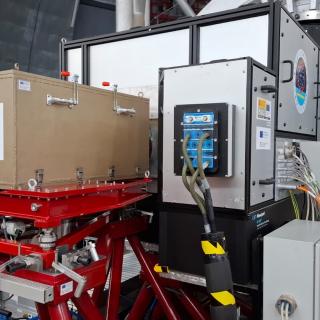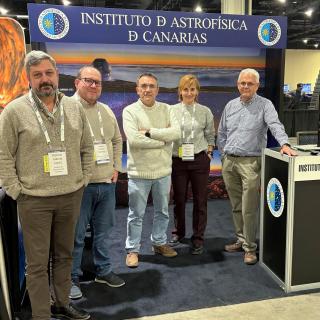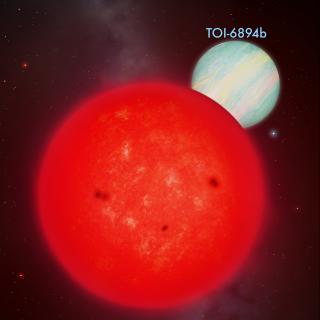It may interest you
-
 During October, the Adaptive Optics System team at the Gran Telescopio Canarias (GTCAO) of the Instituto de Astrofísica de Canarias (IAC), in collaboration with the technical team at the Gran Telescopio Canarias (GTC or Grantecan), successfully completed the integration of the GRANCAIN instrument into the world's largest optical-infrared telescope. The installation was carried out at the GTCAO outlet on the telescope's Nasmyth B platform, a key step in initiating performance testing of the new adaptive optics system. This is the first scientific instrument to operate using the GTC's adaptiveAdvertised on
During October, the Adaptive Optics System team at the Gran Telescopio Canarias (GTCAO) of the Instituto de Astrofísica de Canarias (IAC), in collaboration with the technical team at the Gran Telescopio Canarias (GTC or Grantecan), successfully completed the integration of the GRANCAIN instrument into the world's largest optical-infrared telescope. The installation was carried out at the GTCAO outlet on the telescope's Nasmyth B platform, a key step in initiating performance testing of the new adaptive optics system. This is the first scientific instrument to operate using the GTC's adaptiveAdvertised on -
 The Instituto de Astrofísica de Canarias (IAC) is demonstrating the quality and international relevance of the Canary Islands Observatories at the 245th session of the American Astronomical Society (AAS) meeting being held this week in Maryland (USA). This meeting, led by the American astrophysics community, brings together the world's most important research centres in this field to share lines of work and proposals for the present and the future. The IAC delegation in Maryland is headed by the director of the centre, Valentín Martínez Pillet, who is part of the panel of speakers with aAdvertised on
The Instituto de Astrofísica de Canarias (IAC) is demonstrating the quality and international relevance of the Canary Islands Observatories at the 245th session of the American Astronomical Society (AAS) meeting being held this week in Maryland (USA). This meeting, led by the American astrophysics community, brings together the world's most important research centres in this field to share lines of work and proposals for the present and the future. The IAC delegation in Maryland is headed by the director of the centre, Valentín Martínez Pillet, who is part of the panel of speakers with aAdvertised on -
 An international team of astronomers, including researchers from the Instituto de Astrofísica de Canarias (IAC), the University of Liège and collaborators in UK, Chile, the USA, and Europe, has discovered a transiting giant planet orbiting the smallest known star to host such a companion — a finding that defies current theories of planet formation. The host star, TOI-6894 , is a red dwarf with only 20% the mass of the Sun , typical of the most common stars in our galaxy. Until now, such low-mass stars were not thought capable of forming or retaining giant planets. But as published today inAdvertised on
An international team of astronomers, including researchers from the Instituto de Astrofísica de Canarias (IAC), the University of Liège and collaborators in UK, Chile, the USA, and Europe, has discovered a transiting giant planet orbiting the smallest known star to host such a companion — a finding that defies current theories of planet formation. The host star, TOI-6894 , is a red dwarf with only 20% the mass of the Sun , typical of the most common stars in our galaxy. Until now, such low-mass stars were not thought capable of forming or retaining giant planets. But as published today inAdvertised on
